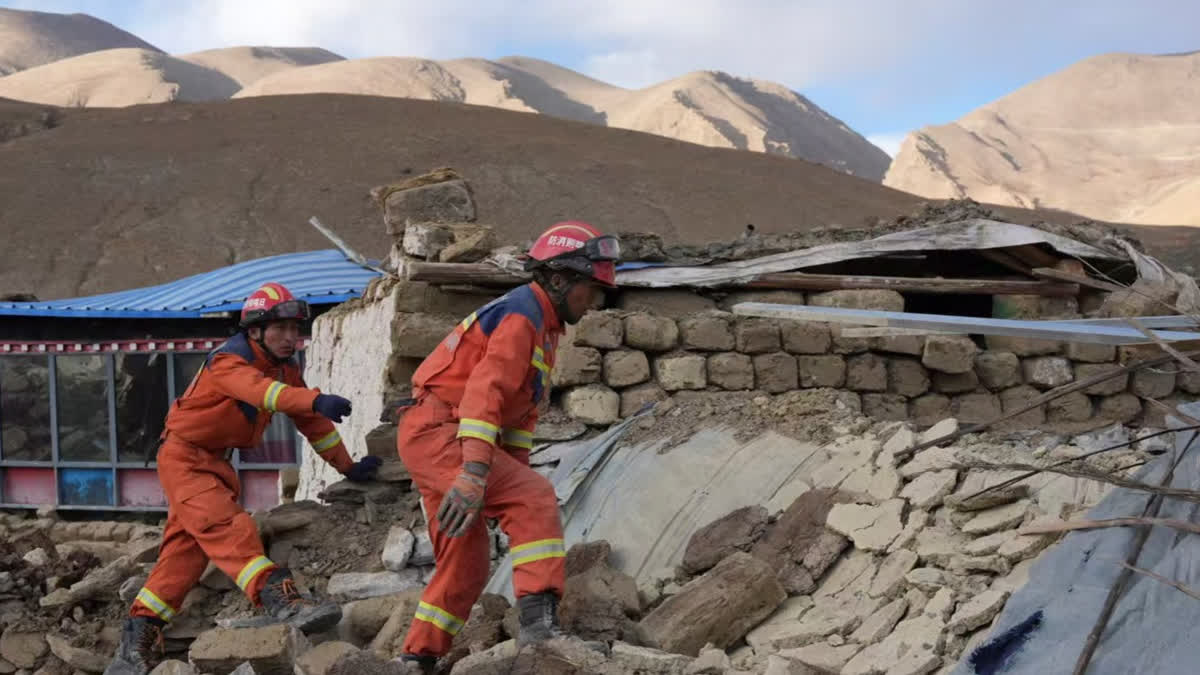New Delhi: The Dingri county region near Mount Everest in southern Tibet that was rattled by a massive 7.1 magnitude earthquake on Tuesday, has experienced an overwhelming 646 aftershocks, at least 16 of them of over 3.8 magnitude, according to officials.
Experts said aftershocks were common after a massive earthquake in the seismically active Himalayan region where the Indian tectonic plate collided with the Eurasian plate, creating long fault lines along the Tibetan plateau.
China's official media put the number of aftershocks at 646 with the largest of magnitude 4.4.
The massive earthquake, pegged at a magnitude of 6.8 by the Chinese authorities, struck Dingri county in Xizang on Tuesday, leaving 126 dead and 188 others injured.
India's National Seismological Centre (NCS) said the main earthquake was of the magnitude of 7.1 and at least 16 aftershocks of magnitude 3.8 and above have been recorded in the region since Tuesday.
A preliminary analysis by the NCS suggests that the earthquakes were caused by normal faulting at shallow depths in the North-South direction.
A review of seismic activity over the past decade reveals that minor earthquakes have occurred in the vicinity of the mainshock region.
"This indicates a certain level of pre-existing seismicity in the area, potentially linked to the ongoing tectonic processes in the region," the NCS analysis said on Wednesday.
Regions farther away, such as Bihar, experienced moderate-intensity tremors which highlight the significant energy release near the epicentral zone.
